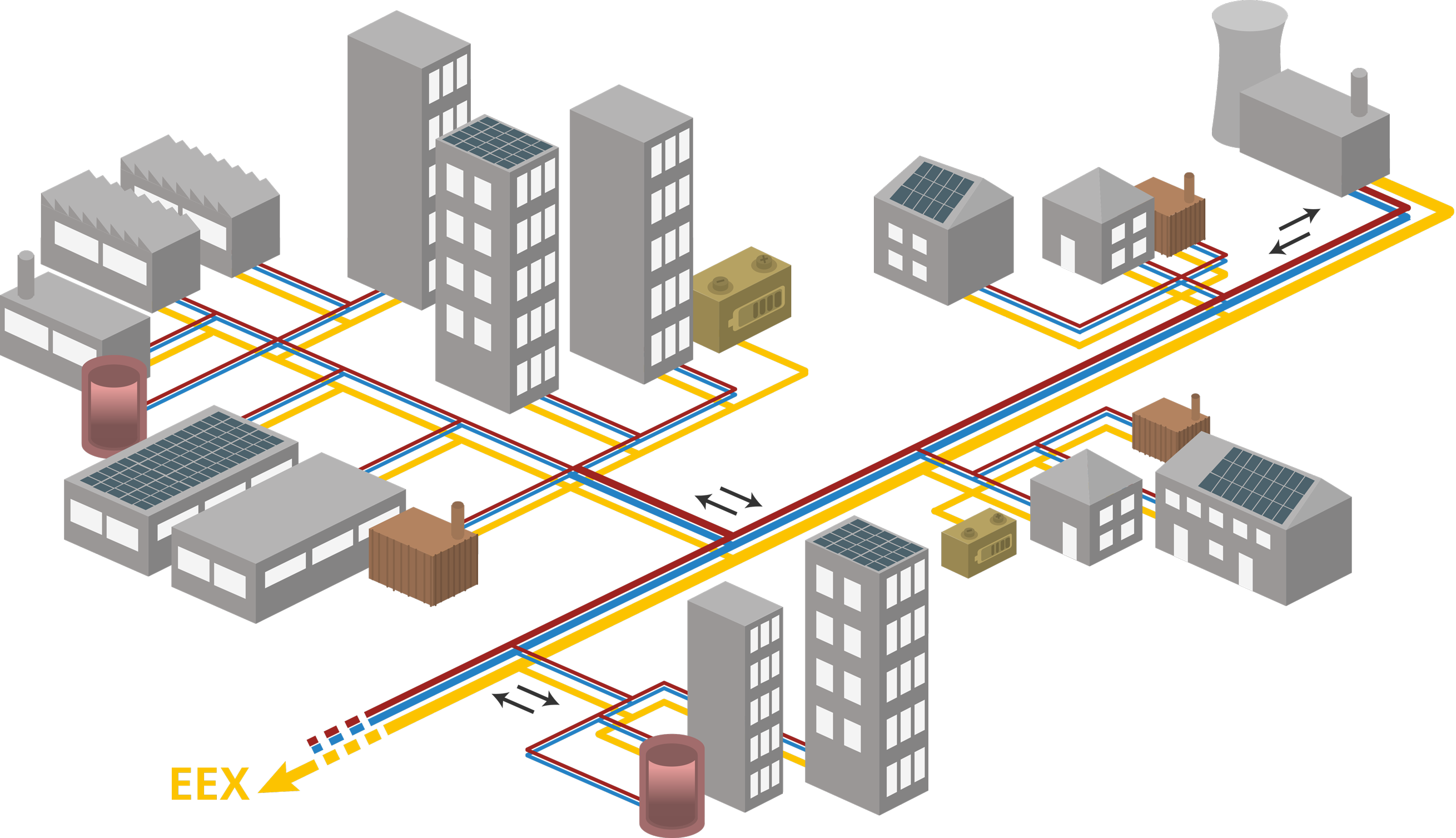| Duration: | October 2017 - September 2020 |
| Contracting Authority/ Sponsors: | Umweltbundesamt |
| Project Partners: | Öko-Institut e.V. |
| Project Focus: |
NEK-Quartiere – Sustainable Use of Renewable Energy for the Delivery of Electricity, Heat, and Cooling in Energy Concepts for Buildings and Districts Under Consideration of Building Energy Efficiency - Initial Research

Successive decarbonization of the building sector with the goal of transforming it to a nearly climate-neutral state by the year 2050 is a key strategy element for the success of the energy revolution. A joint examination of several buildings in a district as the next-larger sub-unit of the building portfolio can help realize additional climate protection potential and compensate for restrictions (such as monument protection) at the individual building level. Using energy and infrastructures in the district as efficiently as possible is the goal. Energy management systems can make an important contribution here.
The study “Climate Neutral Building Stock 2050” and the federal government’s background paper “Building Energy Efficiency Strategy” show that target achievement is only possible by improving energy efficiency as well as expanding the supply of renewable energy. However, both studies also show that considerable efforts need to be made in terms of efficiency and the expansion of renewable energy. Neither of the two categories can reach the goals in the building sector on their own since the potential of both extremes is limited.
Regulatory requirements for the energy performance of new construction and modernization measures have primarily been limited to energy consumption during the use of the building (utilization phase) so far. This applies correspondingly to subsidy programs (especially those of the Reconstruction Loan Corporation (KfW)). But while the requirements for thermal insulation in buildings and for systems engineering are becoming stricter, this also increases energy consumption during the construction phase as a rule, and possibly the costs for demolition and recycling or disposal at the end of a building’s life. While the energy demand during the utilization phase drops in response to increasingly ambitious energy standards, the energy cost for construction/modernization and removal/disposal increases. Thus it becomes more relevant whether and based on what energy standards it is justified to extend the requirements (and where applicable the subsidy programs) in regards to the balancing period beyond the utilization phase. Approaches to lend more weight to the resource perspective were and are increasingly being incorporated over the last few years, for example in the project of the Federal Environmental Agency “Resource Efficient and Greenhouse Gas Neutral Germany” or the Öko-Institut’s internal project “Germany 2049 – On the Way to a Sustainable Feedstock Industry”. Additional environmental targets and performance figures are examined in this project on the district level as well and redeveloped where needed.
The project objectives are:
- Identifying paths to a climate-neutral building stock, effectively designed in terms of the investigation framework with the means of planning, construction, and operation as well as district development.
- Developing definitions of climate-neutral and sustainable buildings and districts.
- Identifying target conflicts that occur between the environmental objectives and proposing solutions.
- Enabling a balancing between modernization and the use of renewable energy from the perspective of assessing the lifecycles of the corresponding technologies.
- Representing possible uses of energy management systems in buildings and districts, and corresponding requirements for the same.
- Making the results available for use by planners, builders/owners, and operators, and in guidelines.
Existing districts are being examined and analyzed in detail within the scope of the study, and synthetic districts are generated for the assessment of the building stock as a whole. Various parameter studies and sensitivities are being analyzed with an optimization tool for districts developed at Fraunhofer ISE.